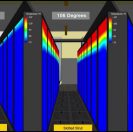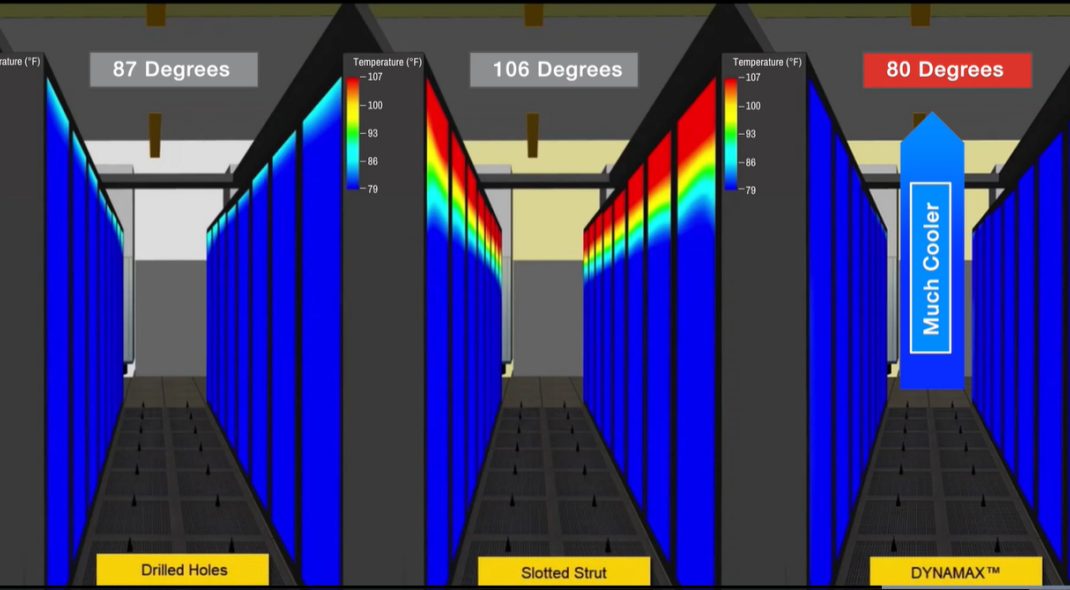Improve The Data Center Cooling Process
Air leakage in different types of data center ceiling systems can impact the efficiency of HVAC operations. The resulting inefficiencies can drive up energy costs associated with cooling data center spaces.
Armstrong ran a computational fluid dynamics (CFD) simulation, putting DYNAMAX Structural Grid System to the test by comparing its temperature and air pressure management capabilities vs. drilled hole and slotted strut ceilings.
Key Findings
Ceiling penetrations from cable trays, electrical distribution, and hot aisle containment leave open areas around supporting rods, reducing pressure in data centers and allowing warm air and dust to leak down from the plenum.
Slotted-strut channels and drilled holes in the ceiling plane add areas for air leakage and increased hot air re-circulation.
On average, the top of data center cabinet equipment was approx. 26°F warmer with slotted-strut ceilings and 6°F warmer with drilled-hole ceilings (not shown) when compared to those with DYNAMAX grid
DYNAMAX grid eliminated the drilled holes and slotted-strut leakages, reducing top-of-rack temperatures
Hot return air was contained within the plenum with the closed-plane DYNAMAX suspension system
Simulation Details:
- Facility Size
- 6,067 SF
- 25" Raised Floor
- Ceiling Specs
- 2' Plenum
- Structural Support Beams
- Lighting (Added Heat)
- HVAC Specs
- 9 Perimeter CRAC Units
- 13 Perimeter PDUs
- Cabinet Airflow
- 120 CFM Per kW of Heat Load


